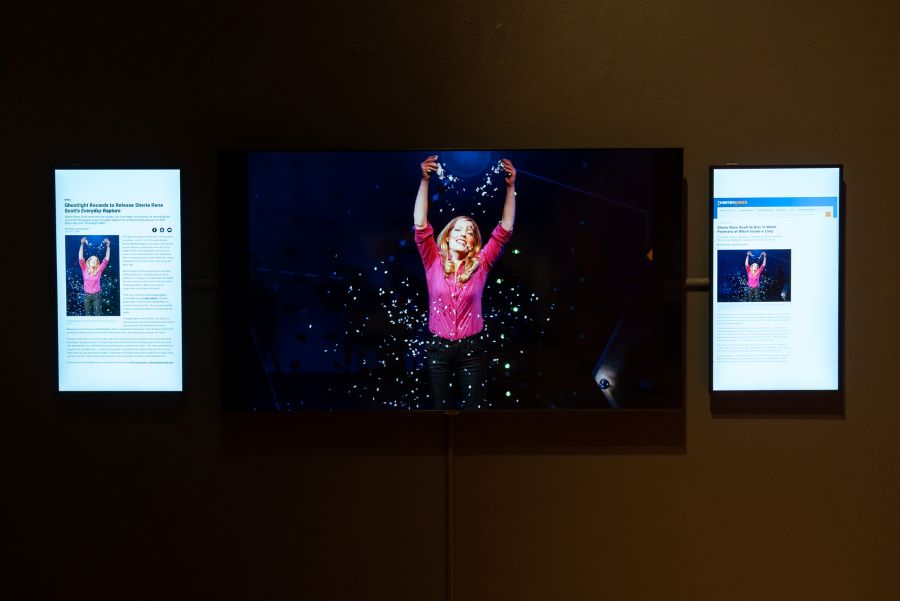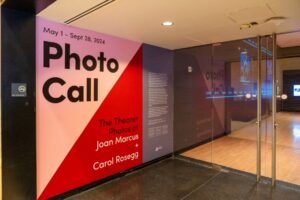
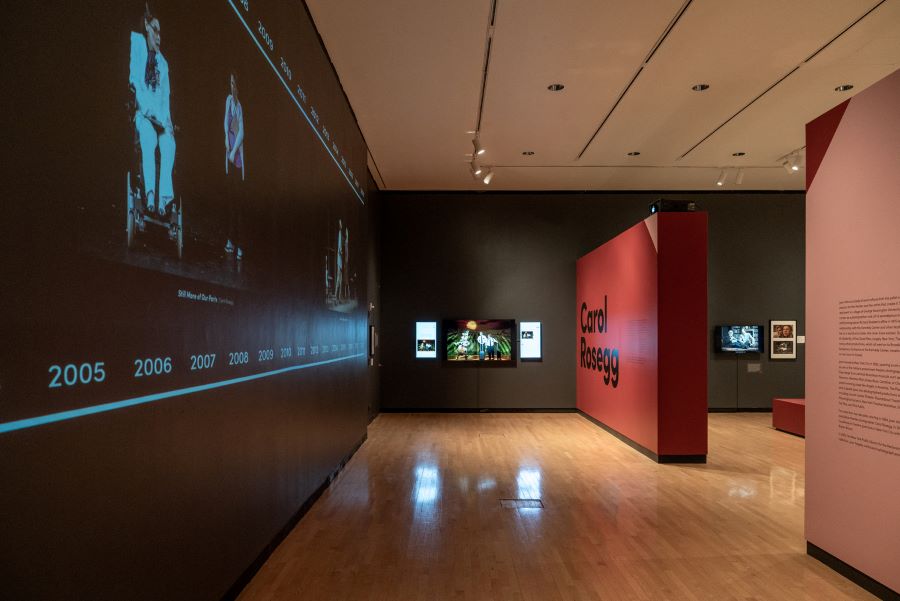
Marcus’s most striking prints, however, are those that serve logo-like as signature images of popular shows. Everyone will recognize her gorgeous shot of those two human-puppet giraffes trekking across a fiery orange background that screams “Lion King.” To appreciate their immeasurable value as theatre photos, one must look carefully at them, and experience how Marcus’s skillful manipulation of artistic elements—line, color, light, composition—conveys a message about a particular show. Theatre photography being the hybrid it is, Marcus’s artistry expresses not her own vision, but that of a larger theatrical work.
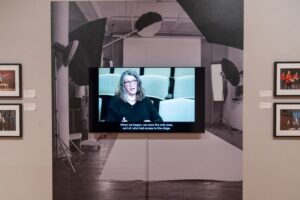
Rosegg recalls that when she started photographing theatre, “We were the only ones who had access.” Today, with the increasing demand for media content, actors are using their phones to produce all kinds of behind-the-scenes images. Yet as the exhibit demonstrates, theatre photography extends beyond documentation, and creating photos of enduring value requires more than access to an iPhone.
Much “insider” knowledge about the theatre industry is gleaned by looking through and considering what was happening in the making of Rosegg’s selected prints. From her complex 1979 shot of Romantic Comedy (reproduced in Playbill), we witness what went on back then at a show’s first rehearsal call, that initial meeting of cast, creatives, producers, and press agents. Aside from the Equity representative, the only “outsiders” allowed were photographers. While her colleagues jockeyed for space in front of stars Mia Farrow and Anthony Perkins, Rosegg stepped back and photographed the other photographers. Her action-filled image captures the entire event—creatives conversing at a table in the background, actors posing, and eager photographers squatting, reaching, and angling to get the best shot.
And those looking curiously through Rosegg’s fantastic photo of Finding Neverland may wonder why it appeared in People without her byline. Because the magazine’s deadline didn’t allow time to collect the contract-required actors’ approvals, the only way the photo could be published was if Rosegg allowed it to run uncredited.
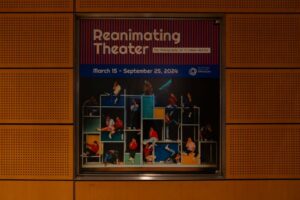
Sourced from the thousands of images in the library’s digitized collection of photographs from Friedman-Abeles, the studio that shot most Broadway shows from 1954 to 1970, the “animations” are designed to convey movement aspects of theatre indiscernible in a static image. While some do so better than others, the key, I discovered, lies in viewer participation.
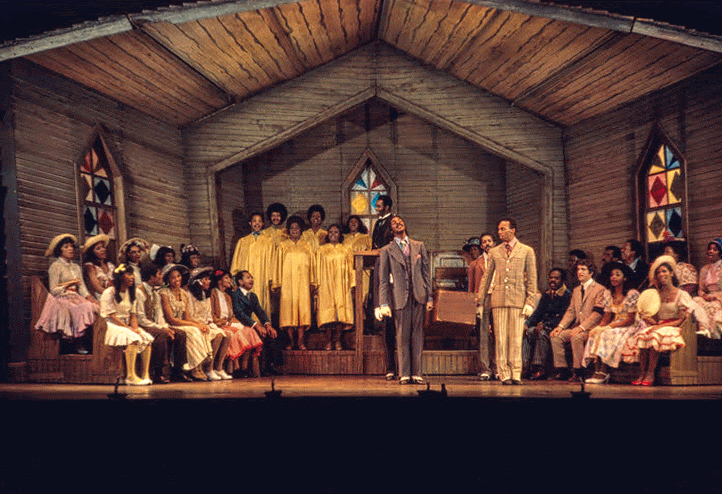
It’s impossible to grasp an entire scene at once or get any sense of ensemble movement. I had to walk back and forth in front of the familiar shot of Bye Bye Birdie’s “The Telephone Hour” 12 times to take in the different actions of all the teens phoning one another from individual boxes. Even the famous poster image of West Side Story’s Tony and Maria chasing down the sidewalk is best experienced in two viewings, one to follow her balletic footwork, the other to feel the yearning in his endearingly awkward running steps. Mysteriously, this “animation” also makes visible a male passerby in a checked shirt who emerges then, oddly, disappears. I wonder, is that because he was in only some of the original shots?
I also question why the exhibit includes mainly iconic images from well-known shows. Perusing the library’s gigantic Friedman-Abeles collection (free online), I discovered oodles of shots of long-lost choreography from obscure musicals that dance buffs would delight in seeing “animated.” Looking for a fun summer pastime? Visit the library’s digital collections and select what theatre photography you’d like “animated.”
Lisa Jo Sagolla is the author of The Girl Who Fell Down: A Biography of Joan McCracken and Rock ‘n’ Roll Dances of the 1950s. A New York-based arts critic, she teaches at Columbia University’s Teachers College and at Rutgers University. Her essay on the Broadway musical Timbuktu! (1978) appears in a new book on Geoffrey Holder forthcoming from Duke University Press.
Support American Theatre: a just and thriving theatre ecology begins with information for all. Please join us in this mission by joining TCG, which entitles you to copies of our quarterly print magazine and helps support a long legacy of quality nonprofit arts journalism.

